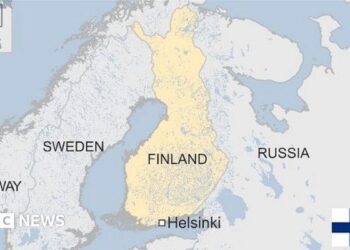Finland is making strides in renewable energy storage with the launch of a groundbreaking “big sand battery” that uses crushed soapstone to store wind and solar power. This innovative technology, described by locals as “a very Finnish thing,” promises to enhance the country’s energy resilience by efficiently capturing surplus renewable energy and releasing it when demand peaks. As Europe increasingly shifts towards green energy solutions, Finland’s pioneering approach offers a compelling model for balancing intermittent energy supplies with consistent power needs.
Big Sand Battery Revolutionizes Renewable Energy Storage in Finland
Finland has ushered in a groundbreaking advancement in renewable energy storage with the launch of a massive sand battery technology that harnesses crushed soapstone to store surplus wind and solar power. This innovative system absorbs excess electricity during peak production times, converting it into heat stored in the crushed stone before releasing it as needed to supply homes and businesses. The simplicity and efficiency of the sand battery not only enhances grid stability but also aligns perfectly with Finland’s vision for a sustainable, carbon-neutral future.
Key advantages of the sand battery include:
- Low environmental impact due to natural materials
- Long lifespan with minimal maintenance requirements
- Exceptional heat retention capable of storing energy for several days
- Flexibility in integrating with existing renewable infrastructure
| Feature | Specification |
|---|---|
| Storage medium | 5,000 tons crushed soapstone |
| Heat capacity | 8 MWh thermal |
| Operational duration | Energy stored up to 100 hours |
| Installation site | Finland, near a local district heating grid |
How Crushed Soapstone Enhances Efficiency and Sustainability in Energy Systems
Crushed soapstone plays a pivotal role in modern energy storage solutions by leveraging its exceptional thermal properties. This natural material boasts high heat capacity and excellent thermal conductivity, allowing it to store vast amounts of energy in the form of heat. When integrated into sand battery systems, crushed soapstone efficiently absorbs surplus electricity from wind and solar power, converting it into stored heat that can be released on demand. This process minimizes energy loss and balances supply fluctuations, making renewable sources more reliable and consistent.
The sustainability benefits are equally remarkable. Unlike chemical batteries that rely on rare or toxic materials, crushed soapstone is abundant, non-toxic, and fully recyclable. Its use reduces reliance on finite resources and decreases environmental impact. Below is a simple comparison showcasing how crushed soapstone stacks up against conventional battery materials in key sustainability indicators:
| Material | Environmental Impact | Recyclability | Resource Abundance |
|---|---|---|---|
| Crushed Soapstone | Low | High | Plentiful |
| Lithium-Ion Batteries | High | Moderate | Limited |
| Lead-Acid Batteries | Moderate | High | Moderate |
- Cost-effective: Soapstone is inexpensive and readily available.
- Long-lasting: Maintains thermal stability over thousands of heating cycles.
- Safe and clean: Non-flammable and free from hazardous chemicals.
Experts Recommend Expanding Sand Battery Technology to Boost Grid Stability and Reduce Emissions
The innovative sand battery system, utilizing crushed soapstone to store excess wind and solar power, is gaining traction among energy experts for its potential to enhance grid resilience and lower carbon footprints. Unlike traditional lithium-ion batteries, these sand batteries operate by heating the soapstone to high temperatures, storing thermal energy that can be released on demand to generate electricity. This design not only extends storage duration but also employs abundant and eco-friendly materials, presenting a scalable solution for countries aiming to stabilize renewable energy supply fluctuations.
Key advantages of expanding this technology include:
- Long-duration energy storage with minimal degradation over time
- Reduced reliance on rare and expensive battery metals
- Enhanced ability to balance grid demand during peak and off-peak periods
- Lower overall emissions due to increased integration of renewables
| Feature | Sand Battery | Lithium-ion Battery |
|---|---|---|
| Energy Storage Duration | Several hours to days | 1-4 hours |
| Material Sustainability | Abundant soapstone | Scarce lithium & cobalt |
| Carbon Footprint | Low | Moderate to high |
| Scalability | High and cost-effective | Limited by raw materials |
Insights and Conclusions
As Finland continues to pioneer innovative solutions for renewable energy storage, the launch of the world’s largest sand battery represents a significant step forward in addressing the challenges of clean energy integration. By utilizing crushed soapstone to store surplus wind and solar power, this technology not only offers a durable and cost-effective alternative to traditional batteries but also underscores Finland’s commitment to sustainable energy independence. As other countries look to enhance their renewable infrastructures, the success of this “very Finnish” initiative may well inspire new approaches to harnessing and storing green energy across the globe.













